Having a solid marketing strategy for a small business is critical, whether you’re just getting started or already have one.
Customers learn about local businesses online more than anyplace else. Therefore, your online marketing efforts should be focused on spreading the word about your products and services.
Small business owners who want to measure ROI and brand awareness may benefit from digital marketing. Digital marketing is an essential component of any successful business’ growth strategy. Not only is it important for selling your products or services, but optimizing your online assets is just as essential to the success of your company.
Small businesses need to provide their target market with up-to-date and essential information as soon as possible.
It may all sound like a foreign language to you if you’re a small business owner with little knowledge of internet marketing. But understanding your customers and marketing your business in the right way can make or break any company.
In this article, we’ll assist you in developing and optimizing your marketing plan by using inbound marketing. We’ll set you up to develop new clients and eventually expand your company.
Small Business Marketing
Marketing is intended to raise brand recognition and develop a pipeline of qualified leads that result in purchases. Unfortunately, getting the word out might be tough for a small business since it has less exposure and fewer resources (such as funds or time). There are, however, certain tactics that may help you expand your small company’s marketing efforts.
A suitable marketing plan for your company may assist you as you scale, whether you’re dealing with a tight budget, time constraints due to a smaller team, or even a lack of focus.
Small Business Marketing Strategies
These strategies are fundamental as you generate revenue and awareness for your organization:
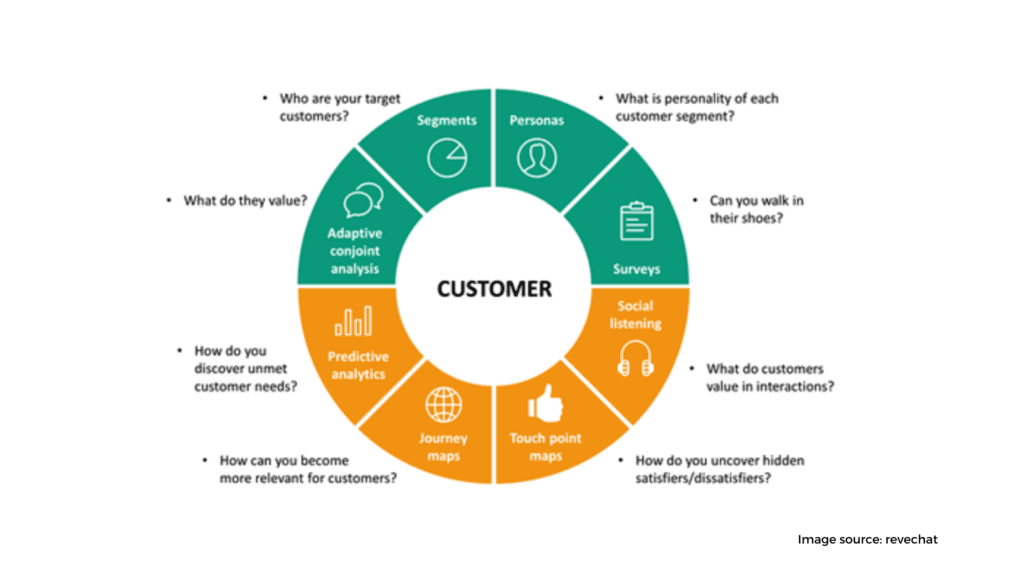
1. Know your audience
It’s a mistake to believe that “anyone” is your buyer. Larger businesses may appeal to a wide range of consumers, but they make the statement for a reason. A niche is a particular market segment. You’ll have the most power in a niche as a small firm. To establish and appeal to target customers within the niche, you must comprehend your consumers’ problems, issues, and triggering circumstances.
What is it that is compelling them to make a purchase? What does it look like if they do succeed? Knowing these things will aid you in developing messaging that appeals and makes a strong case for your solution.
Begin by considering your present and potential clients. Then, develop a buyer persona to get into the mind of your ideal customer as you begin this process.
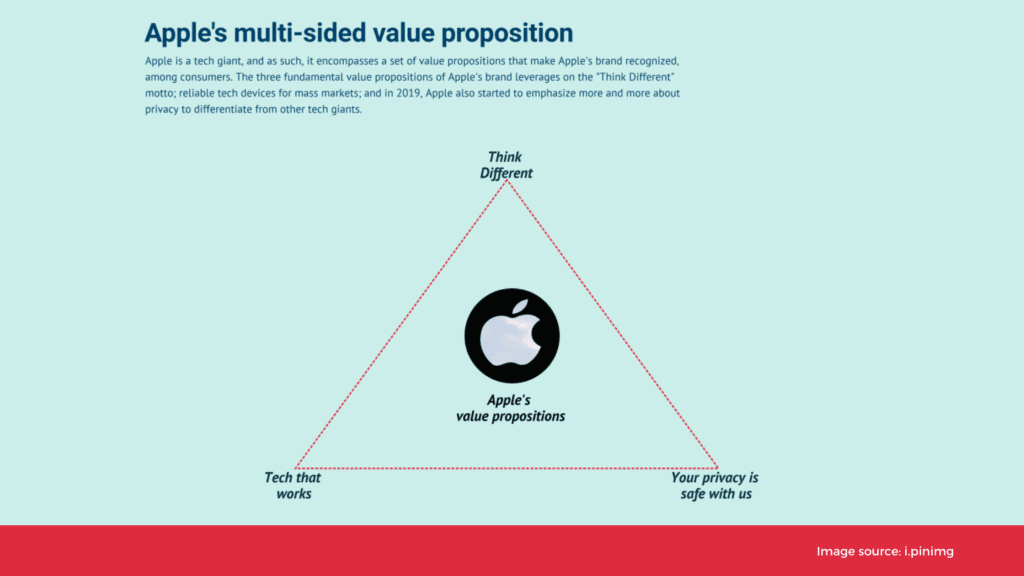
2. Emphasize your value proposition
There’s no need for a buyer to engage with you if there isn’t a distinction between you and your competitors. Your value proposition is what will set you apart from the competition and persuade your prospects to choose you over others in your field. What is it that you excel at above all others? Making this point makes a strong argument.
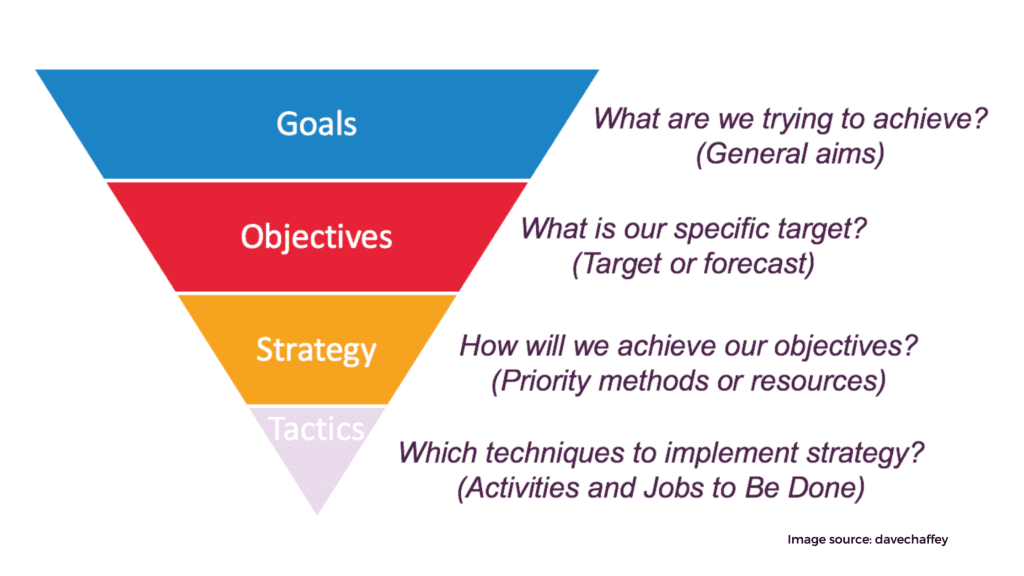
3. Stay focused on singular goals and objectives
If you’re interested in the world of marketing, you’ve probably noticed that there are a lot of different possibilities available. It’s tempting to try and make a complicated machine in one shot in the hopes that you covered all of your bases, and it’s easy to take on too much.
Instead, figure out where you’ll have the most influence. What is the most important blind spot in your marketing that’s keeping you from growing? Set a goal for one key aspect of your business and concentrate all of your efforts on the activities and tactics to help you reach that one performance aim. When you’ve attained more than one objective in a single direction, you may either extend your efforts or redirect them to new endeavors.

4. Capitalize on short-term plays
As your company expands, seeing an immediate return on investment is critical. This will provide you the momentum and cash flow you need to focus on bigger initiatives, long-term bets, and more sustainable growth models.
Poor fits for your main objectives take time to develop since you won’t see a return fast enough for your liking. If you have enough resources to get started, that’s great, but if not, don’t put all of your eggs in one basket.
If you prove that consumers are searching for your product on Google with purchase intent, paid ads may provide you with a short-term return on investment.
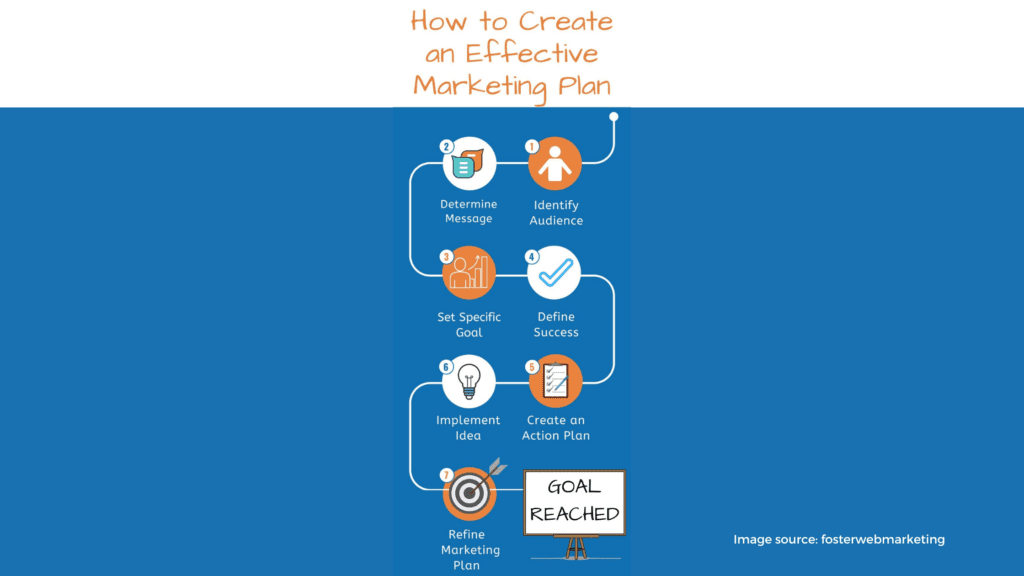
5. Double down on what works
Once you’ve gotten your initiatives up and going and have dabbled with a few things, keep an eye on the data.
This may help you figure out what’s working. Then, when you expand, it’s a smart idea to continue to focus on proven revenue-generating methods.
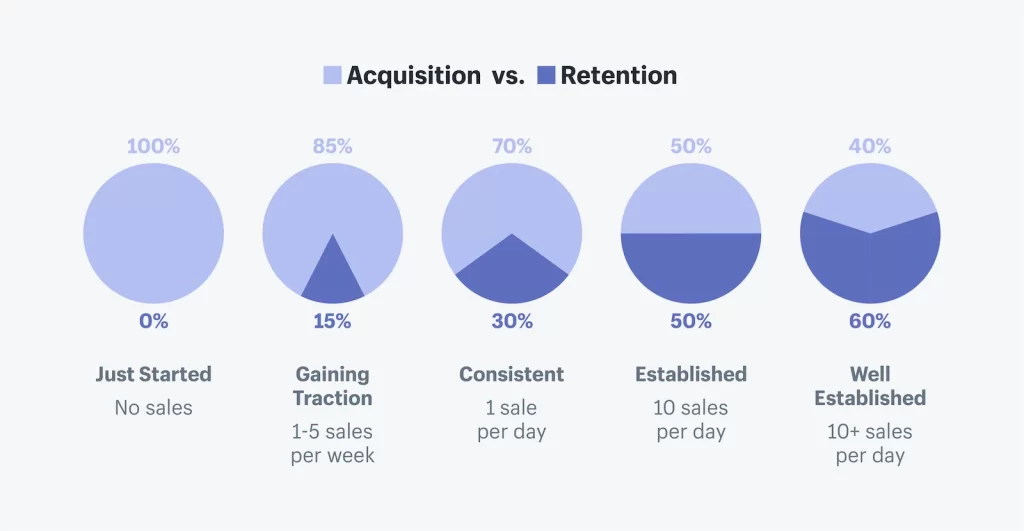
6. Understand the power of existing customers
Identify potential opportunities for repeat purchases, upselling, and cross-selling. Because your existing clients have already bought from you, they know, like, and trust you. If you provide a positive experience, they’ll have a reason to do business with you again should the need ever arise.
Even if the need doesn’t come up (when it’s a one-and-done purchase with no potential for upsells), you should still please your consumers. Again, word of mouth is a powerful (and free) brand awareness tool.

7. Use free promotional tools
Remember that since you’ve set a modest goal and scope, there’s no need to spend money on gadgets in terms of free promotional tools.
Use free marketing resources whenever feasible and only commit to paid tools if you’re confident they’ll make a significant difference to your current operations or performance.
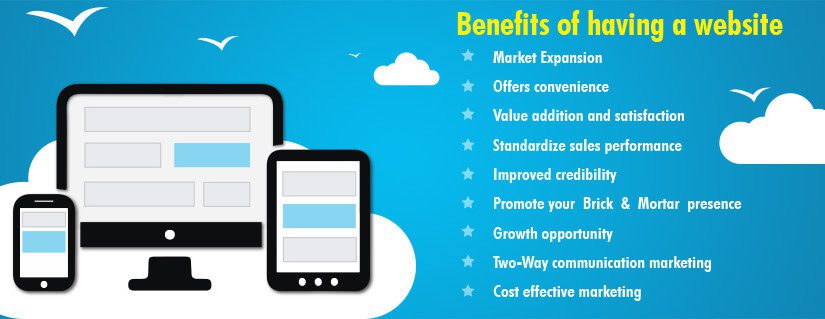
8. Create a website to own your online presence
Having a professional-looking website is one of your small company’s most significant assets.
Start by describing yourself, the product or service you provide, where you are located, and how a potential client may contact you.
It’s a channel that you’ll always have (unlike other platforms, which may modify their terms or go in/out of style), and it has the potential to produce organic traffic in addition to being a venue for traffic from marketing and other marketing initiatives.
Your website isn’t simply a brochure. You can transform it into a 24-hour salesperson by learning how to convert visitors and turn them into leads (more on that later).

9. Consider blogging to attract potential customers to your website
Blogging can generate organic traffic, especially for customers who have yet to make a purchase decision. It can also help you establish credibility and positioning as a leader in your field.
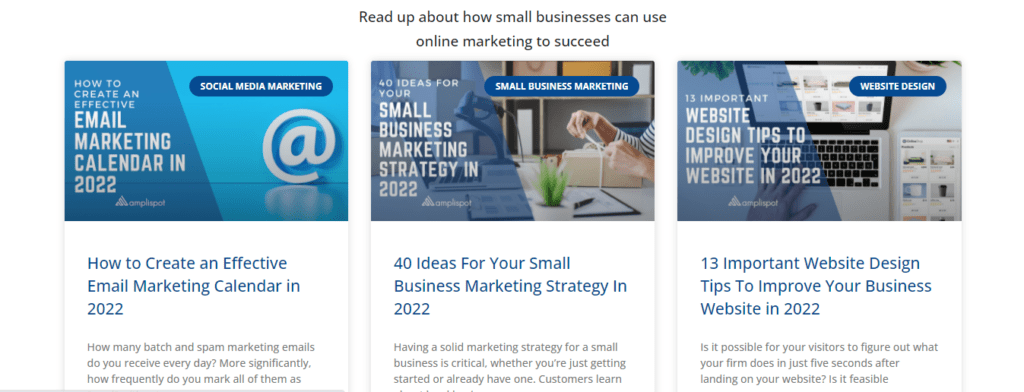
To create a blog, you may use an inexpensive or free website tool to build a free website and utilize one of their templates. Even if you only post once a week, it will increase the popularity of your website and educate potential consumers on why they should trust your business.
Once you’ve begun composing, you may add a call-to-action to your articles so that people can subscribe to your blog and receive emails. This is a great way to start collecting leads and offering potential customers a way to get information if they aren’t ready to buy anything from you yet.
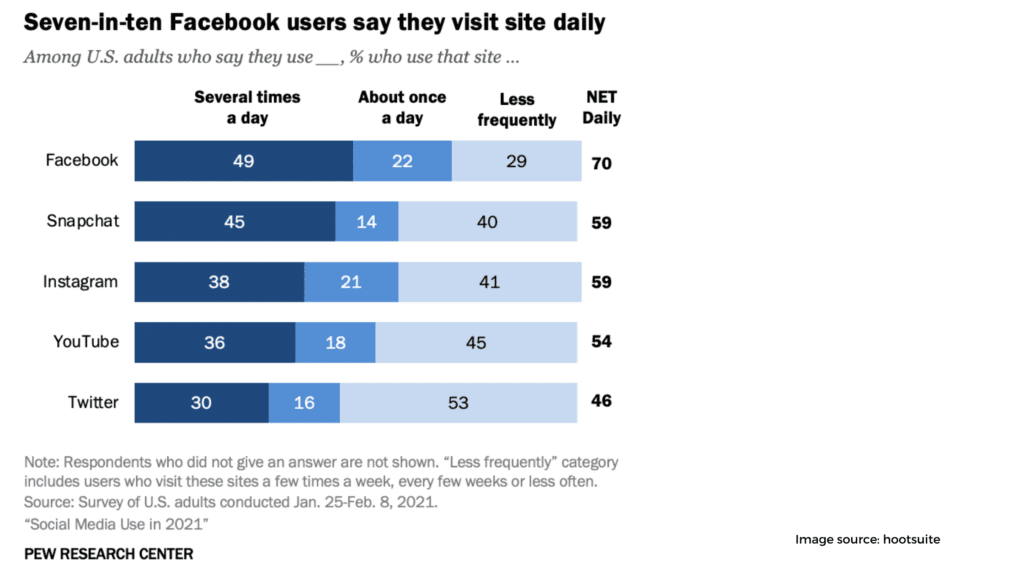
10. Promote yourself on social media
You may have never considered how social media marketing can impact your business. Social networks might appear to be nothing more than a leisure platform for people to interact and network, but they’re really powerful business tools.

You may use social media posts and relevant material to enhance your domain authority, improve your search engine rankings, and engage with possible consumers. So why wouldn’t you want to be seen where your prospective customers spend their time?
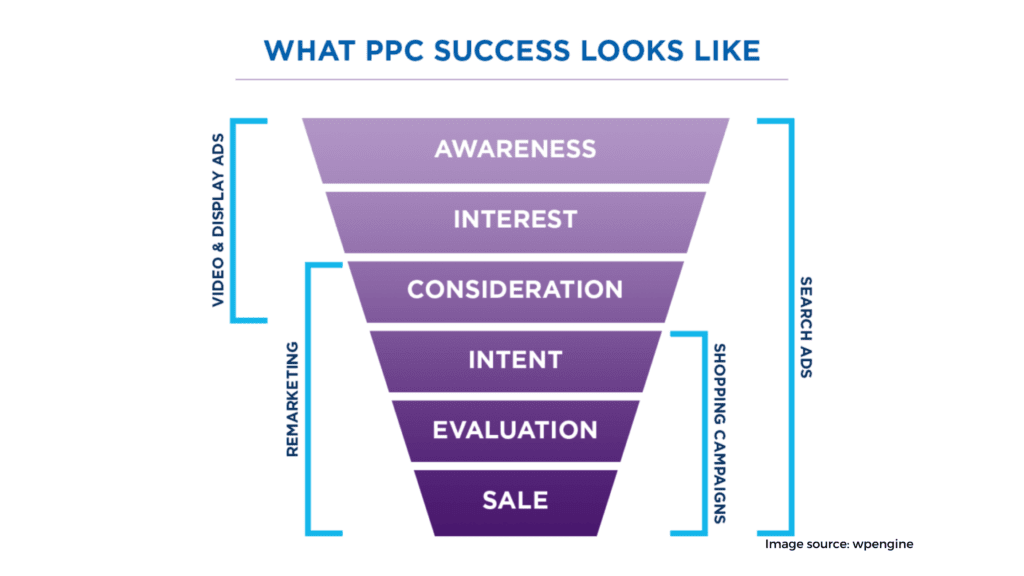
11. Invest in ads
Organic traffic may take some time to develop, and as a small business, you need to focus on short-term goals. Pay-to-play strategies that target consumers with high intent are excellent for short-term gains to start new goals.
If you’re confident that your target audience is looking for your product or service on the Internet, Google Ads are ideal. However, if that’s not the case, you may consider social media advertising.
Social media users have less intent to buy things, but you may attract your audience’s attention with targeted advertisements and enough exposure.
12. Marketing efforts to capture web prospects’ information
We’ve been talking about visibility and traffic, but we haven’t discussed how they’d help you generate income. A conversion tool is a simple
way to get your website up and running, start generating leads or consumers.
You may start collecting the email addresses of potential consumers by adding a pop-up widget to your website with this tool. From there, you may send out advertisements and deals in the hopes of converting them into paying consumers.
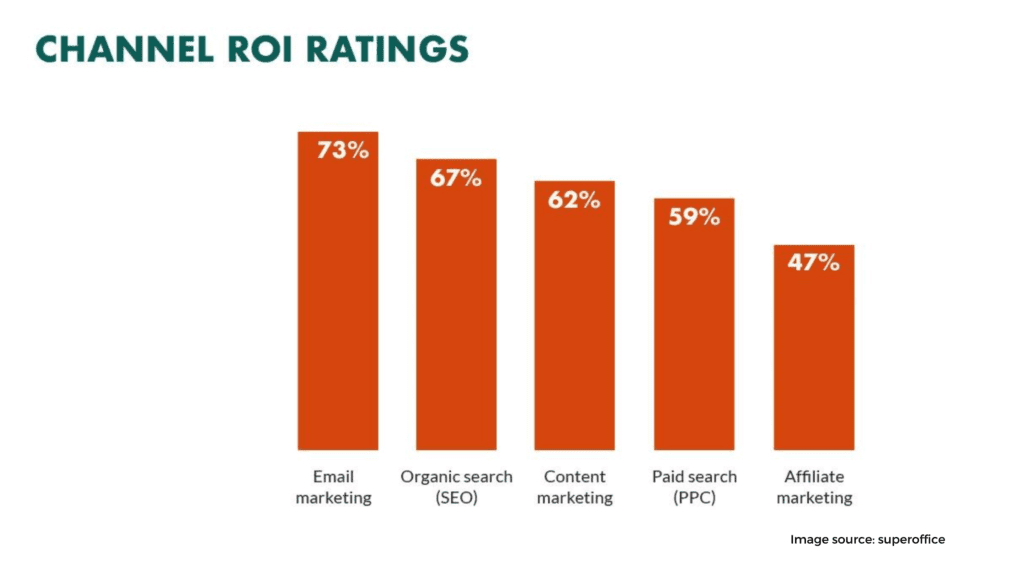
13. Use email marketing to nurture leads
It’s not just about converting website traffic into sales; it also involves getting those leads to the point where they’re ready to buy. Therefore, it’s critical to keep them top of mind and get them closer to a purchase decision.
This strategy is a free, easy and scalable way to communicate with new and existing customers.
Once you’ve got an email marketing tool in place (which may often be either low-cost or even free), test utilizing it to send out newsletters (with your new sleek blog articles) as well as other marketing efforts to your list, we understand that small company owners don’t have much time to devote to digital marketing, so consider using marketing automation to make the process even simpler for yourself.
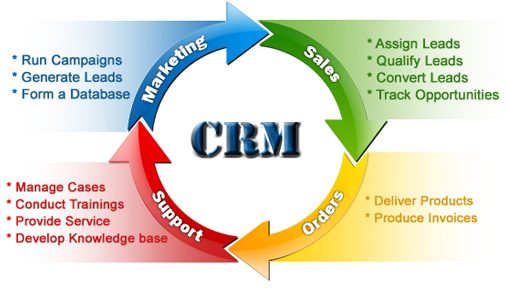
14. Manage relationships with a CRM
Email marketing is most effective when you send customized, targeted emails. A customer database or customer relationship management (CRM) software is required to get started.
Keep track of consumer interactions and identify sales opportunities more effectively with your CRM. It keeps track of leads, prospects, and customers so you can follow up on leads and set appointments more easily.
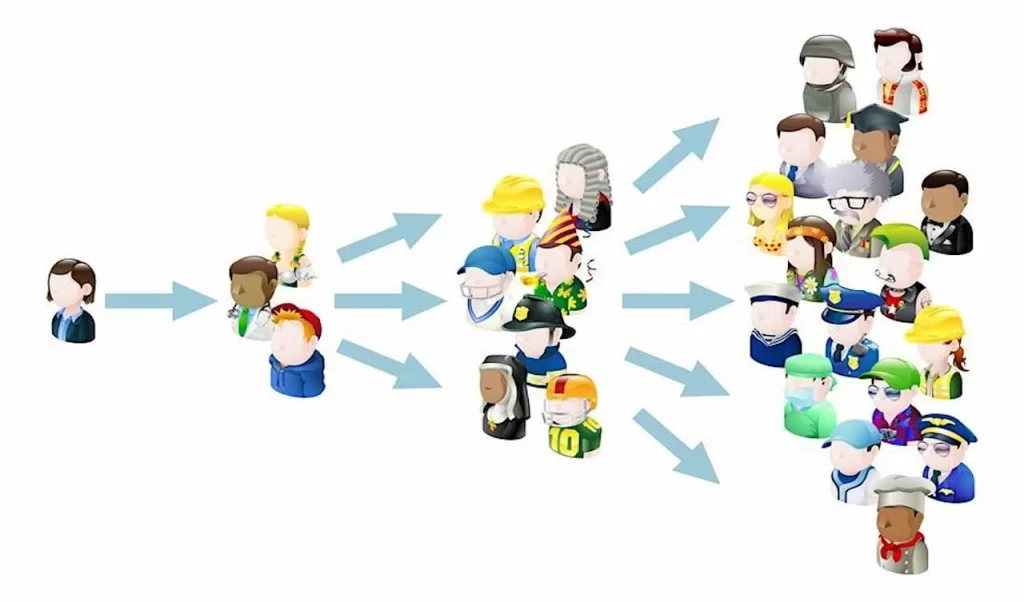
15. Consider of mouth as a promotion channel
As previously said, providing excellent service to consumers may significantly impact your company, especially in repeat purchases and word of mouth. In addition, if you provide a superior customer experience, your consumers will be more inclined to write reviews, give testimonials, and share recommendations about you.
That is why it’s critical to track client satisfaction and encourage customers to tell others about their experience.
Marketing Tips for Small Businesses

1. Determine your brand’s identity
Consistent brand identity may help you appear more professional and attract new consumers.
The founder of Amazon, Jeff Bezos, has said that a firm’s branding is “what others say about you when you’re not in the room.” Your brand is the impression and sentiments that individuals obtain when they hear your company name. It’s the sum of your brand name, logo, visual style, and the design of all of your assets.

2. Identify your buyer persona
What would a consumer look for in the world of your product or service? What do you think they’d be like? What are their problems, concerns, and difficulties? What is their profession? A buyer persona is what you create to tell your ideal client’s story. By creating one, you can make an online page tailored to them.
You can use a buyer persona to better determine what your target consumer may be searching for and include those terms on your website by learning more about them through developing a buyer persona.
3. Design a logo and other assets
Consider your color scheme and peruse palettes to get the creative juices flowing. You may use your own or select from pre-made or personalized color palettes.
You may create your logo online for free or at a lower cost, although using a freelancer or agency might provide you with a higher-quality product and someone who can modify and update your brand assets as your business expands.
4. Build your website with a CMS template
If you’re a small business owner who is fairly tech-savvy, you’ll probably want to develop your own website. The procedure is made easier with a CMS (content management system).
Many CMSs provide customizable templates for your website, which you may obtain for free or nominal. Templates are available in various skill levels, ranging from simple to advanced.
Most CMS systems now have plugins to assist you in optimizing your content for search (look for SEO plugins). This will help you rank higher in Google.
5. Track your site with analytics tools
If you’ve never created a website before and aren’t sure whether or how to go about doing so, there are several free resources and services available to assist you.
Make sure you include Google Analytics, for example, when you create your website so you can easily monitor who’s visiting it.
6. Consult marketing agencies or freelancers for web design help
If you don’t have the technical knowledge and want a website created for your small business, you might hire a freelancer or a web design company that specializes in this area.
This is a fantastic solution for companies that already have a website but need it to be updated and optimized for SEO (search engine optimization).

7. Boost your Google ranking with SEO
Have you ever Googled yourself or your product/service online if you already have a business? If so, did you wonder why your website isn’t showing up on Google? You probably considered, “How can I rank on Google?” or “How can I increase my Google ranking?”
There are a variety of elements to consider when determining why a certain website or page appears at the top of Google’s (or another search engine) SERP.
There are a few things you can do to improve your website’s search engine visibility. Having appropriate keywords (and their placement on your site), the length of your content, high-quality material, how quickly your page loads and posts content, and more are just a few examples.
When you boil it down, Google is primarily looking for the greatest piece of material to show to the user. It strives to surface the most relevant, highest-quality content possible.
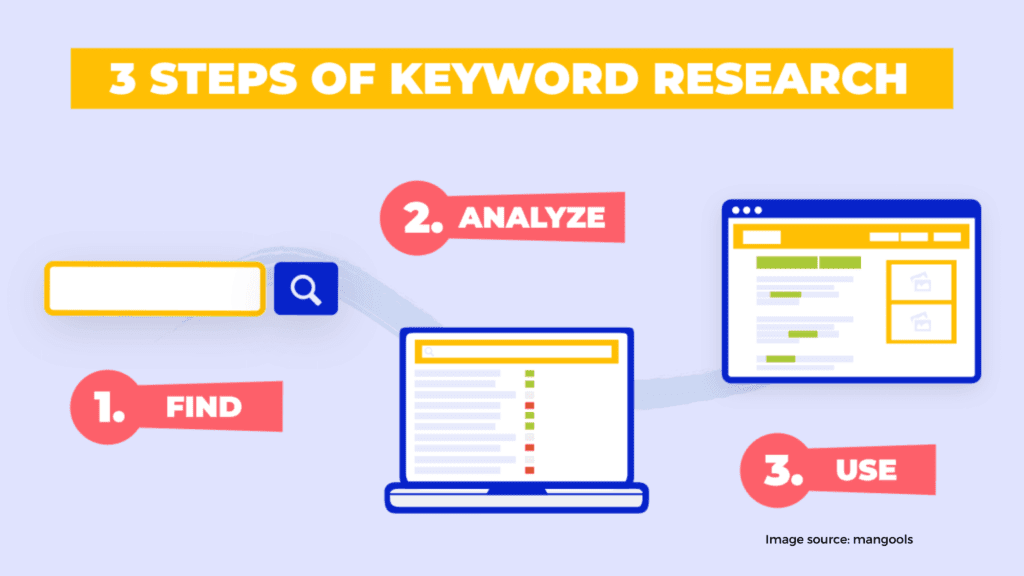
8. Research keywords opportunities
Keyword research is a kind of buyer persona analysis. You may use the personas you’ve created to look for relevant keywords for your target audience using program software.
You should also incorporate your keywords into the title, meta description, and H1 tags of each page. This is when you’ll use on-page SEO research to improve your ranking.
9. Optimize your website for mobile devices
Browsing the Internet on a smartphone or tablet is more convenient than using a desktop computer and can result in increased visibility for your business.
A mobile site can also be beneficial to your SEO, with search engines like Google giving you a better ranking if you have one.

10. Write optimized blog posts
When it comes to your search engine ranking, content and blogging are critical.
The more frequently your keyword is mentioned in high-quality, informative content, the more likely it is to show in search results. Blogging is an excellent method to establish yourself as an expert on your field, product, or service.

11. Experiment with photo and video content
There has been an increasing number of consumers wanting to see a video ad from a brand. Furthermore, most social networking applications, such as Facebook and Instagram, are adopting more visual designs. It’s critical to stay ahead of the curve when it comes to these trends. Making a few marketing videos is a good idea.
12. Hire a freelancer to help you upgrade your content
If you need assistance with making frequent blogs or commercial material, consider hiring a freelancer instead of employing a full-time employee.
The Internet has changed the ways we do business forever. No longer will you find success if your only form of marketing is word-of-mouth advertising and phone calls. You’ve got to create a digital presence and use it as much as possible for maximum exposure and revenue.
You might also want to consider working with a marketing agency on a larger project.
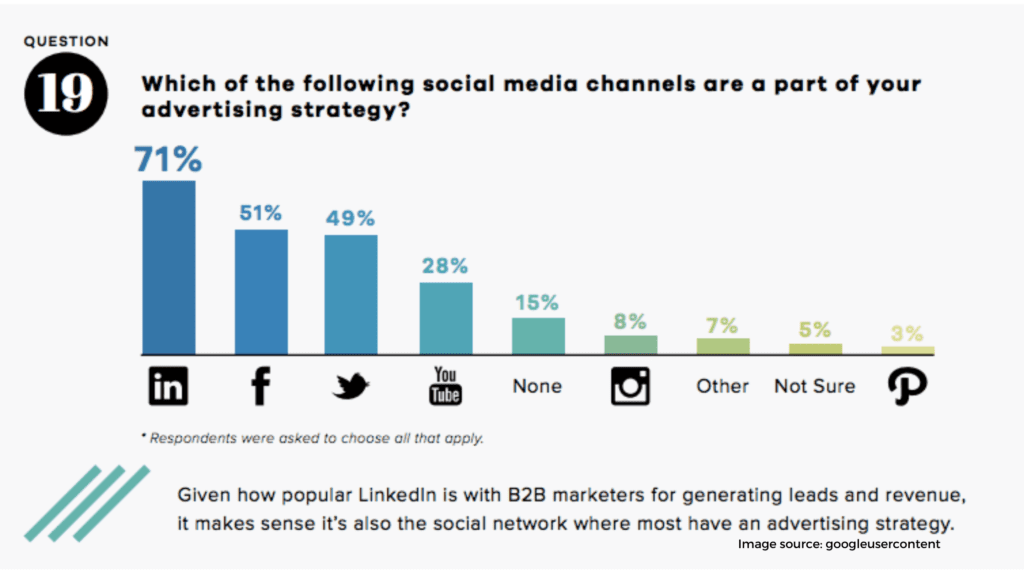
13. Launch business pages on Facebook, Twitter, and LinkedIn
If you want to get in on social networking sites for your small business, then create profiles on the biggest ones out there.
Business pages are free ways to reach prospective clients. In addition, you can link these profiles up with your website or blog so that visitors can search for you by name.
Your authority on the Internet is improved if you have a lot of good reviews.
Having up-to-date social media accounts will assist you to be discovered and interacting with prospects for every business. Create a Twitter account, a Facebook business page, an Instagram profile (if relevant), and LinkedIn.
14. Build out your social media strategy
If your consumers can purchase your products or services online, these social media platforms mentioned above will also give them a way to find you.
With expert marketing automation software, you can run automated campaigns that will help you engage with your prospects. You should also implement reporting features to see what works and what doesn’t to make informed decisions about future marketing strategies.

15. Use social media for customer service
You must be on your chosen platforms once you’ve decided where to advertise. When customers or followers ask questions through posts or direct messages, respond to them. This will make your firm seem responsive and trustworthy.
If you have the resources, consider hiring a social media manager who has prior community management experience. Community managers are responsible for answering questions or complaints from their followers on top of frequent posting.
16. Build interesting landing pages
A landing page is a free service that a potential consumer may access in exchange for providing basic contact information. When they receive the information, they may be even more pleased by your business and want to purchase the entire product.
You want your landing pages to appear attractive to boost your conversion rates.
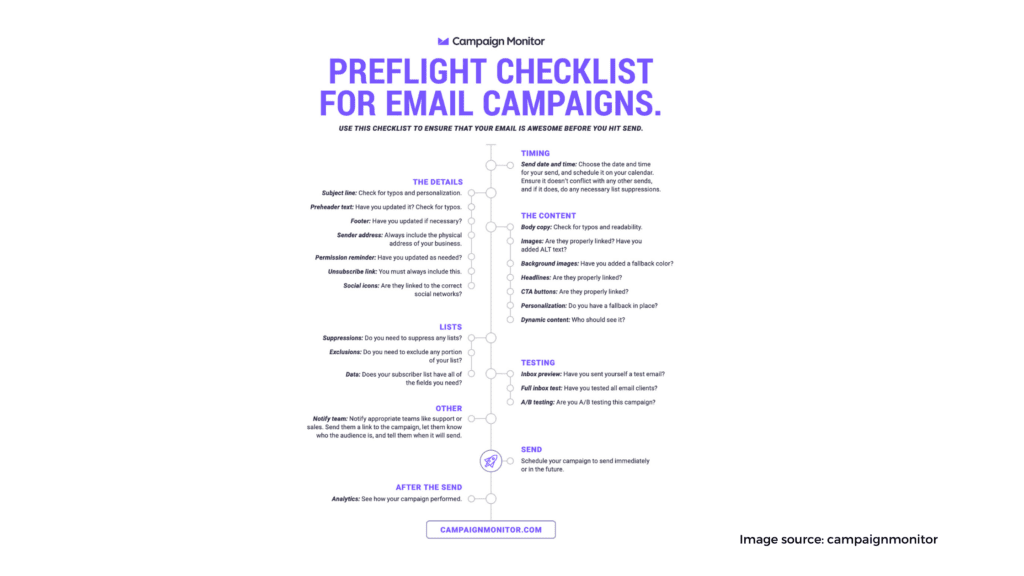
17. Plan an email marketing strategy
You’ll want to share your new content and landing pages with the prospects who seem most interested in learning more about your product once you’ve started producing it regularly. As a result, we propose establishing an email marketing campaign.
You should send just enough emails to keep your prospects up to date and engaged.
If you’ve never created and sent a regular email before, numerous low-cost services can help you create and send one. Basic analytics, such as open and click rates, are also available in many email tools.
18. Offer coupons on newsletters or on landing pages
You may engage and delight your audience by including a coupon in your marketing emails. Include a call to action to advertise your landing pages in emails. You can also include coupons if appropriate for your business.
If you run a subscription service, it’s also a good idea to provide free trial codes so that people can try it out.
19. Share your distribution channels on your website
After you’ve established a few social media accounts and can allow individuals to join your newsletter, include a link to this on your website so that your visitors may subscribe.
Another approach is to have all of your linked social icons and a newsletter sign-up action on every page of your website. It is recommended to place these in the top right corner or at the bottom of each page’s footer. This way, they are apparent without taking away from any of the material.
20. Offer a free webinar
A webinar is a presentation in which potential customers may register for an online program presented by you.
Attending a webinar is usually about 30 minutes to an hour, and it allows you to provide advice and answer inquiries regarding a subject about which your business is knowledgeable. This tactic might assist you in increasing your reputation in your profession, but it can also offer possible leads and sales possibilities.
21. Consider PPC Advertising
PPC advertising, or pay-per-click advertisements, is an excellent way to boost your SEO efforts if you’re working hard but need a little push. Use Google AdWords or Bing Ads to raise your rankings with this search engine marketing strategy. Before starting PPC, make sure your landing page is as optimized as possible. If you’re paying for every click and those who view the page don’t convert, you’ll lose your marketing dollars.
22. Experiment with influencer marketing
Is there someone in your location with a large social media following who is regarded as an expert in a field where your company does business? If you can get in touch with them, see if they’d be willing to discuss their experience with your product or service on social media. This will notify their following of your product. These followers may believe in your product more since it has the endorsement of an expert.
You might also hire an influencer on a freelance basis if you can’t locate someone to volunteer.

23. Try co-marketing for small business
Is there a small business that isn’t a direct competitor in your area that sells something or provides a service to the same market?
Working with them on a cobranded marketing plan where you promote each other on social media, by email, or in blogs. While you’ll offer them more exposure, they’ll be able to learn much more about you due to your relationship.
24. Draw up a go-to-market strategy
After you’ve installed all of the tools necessary to market your product or service, you’ll need to devise a promotional strategy that corresponds with your customer journey.
Consider how you’ll attract, engage, and amuse your prospects,

25. Try out marketing experiments
Don’t be scared to try new social media platforms or marketing trends if they interest you. If an experiment succeeds, you may be ahead of the competition, and it’s never a bad thing to be a thought leader in your field.
When experimenting with a new marketing approach, be sure to have a clear hypothesis or question in mind so that you have marketing options.
This will help you stay focused on your ultimate objective and prevent you from chasing the next big thing as it appears. Also, if you obtain good or unfavorable outcomes, be prepared for what your following actions will be.
These are ways you can market your small business. After reading through this guide, you should have a better idea of what marketing strategy to implement.
Many of these ideas may appeal to you because they’re already part of your company’s marketing plan. You’ll need to make use of social media, email marketing, remarketing ads on Google and Facebook, review generation, blogging, SEO analysis on your website’s content, etc. Also, consider that most businesses may require a full-time or part-time marketing person if they have limited time or marketing know-how internally.






